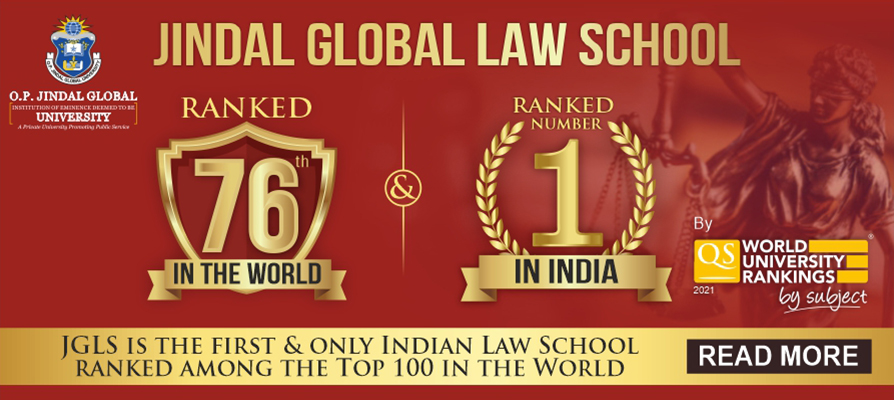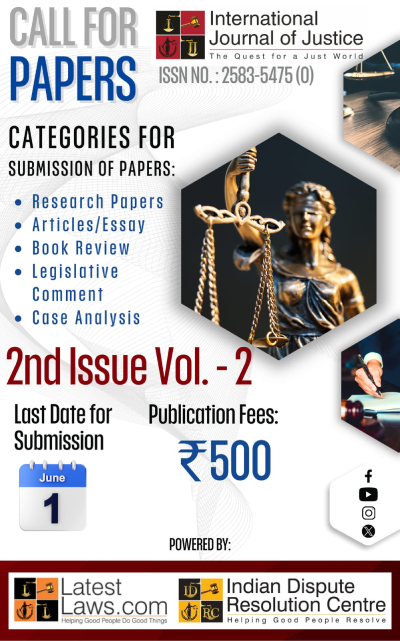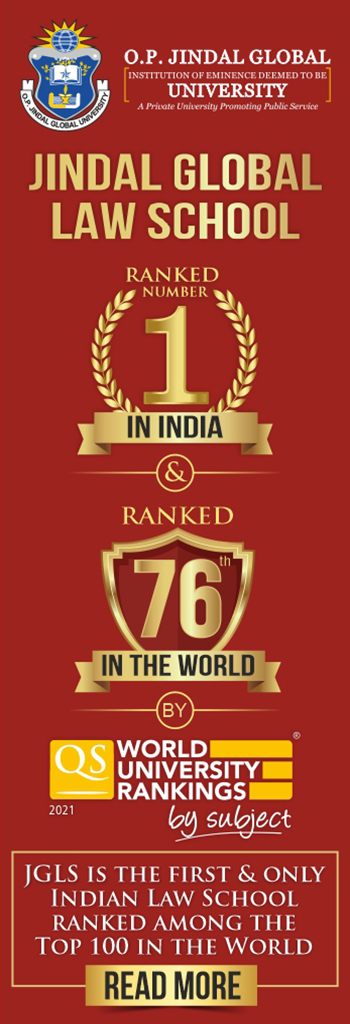M/s. Delhi International Airport Pvt. Ltd. Vs. Union of India & Others
M/s. Delhi International Airport Limited Vs. Indira Gandhi Airport TDI Karamchari Union & Ors.
Airport Authority of India Vs. Indira Gandhi Airport TDI Karamchari Union & Ors
Airport Authority of India Vs. Union of India & Ors
Indira Gandhi Airport TDI Karamchari Union Vs. Union of India & Ors.
Airport Authority of India Vs. Union of India & Ors.
J U D G M E N T
Dalveer Bhandari, J.
1. Leave granted in all the Special Leave Petitions.
2. These appeals emanate from the judgment of the High Court of Delhi delivered in LPA No.38 of 2007, LPA No.1065 of 2007, Writ Petition (C) No.139 of 2008 and Writ Petition (C) No.6763 of 2008 on December 18, 2009.
3. The short question which arises for consideration in these appeals is whether the Notification dated 26th July, 2004 issued by the Central Government under Section 10 (1) of the Contract Labour (Regulation and Abolition) Act, 1970 (for short, `CLRAA') prohibiting employment of contract labour of trolley retrievals in the establishment of the Airport Authority of India (for short, `AAI') at the Indira Gandhi International Airport and Domestic Airport at Delhi would be applicable to the Delhi International Airport Private Limited (for short, `DIAL') or not?
4. This judgment would decide these appeals preferred before this Court against the following Letters Patent Appeals and Writ Petitions decided by the High Court:a) Indira Gandhi International Airport TDI Karamchari Union v. Union of India and others - LPA No.38 of 2007 This Letters Patent Appeal was filed against the judgment of the learned Single Judge dated 28th November, 2006 in Writ 2Petition (C) No.15156 of 2006. The workers' Union had preferred the writ petition for seeking implementation of the Notification of prohibition dated 26th July, 2004 and for absorption in service amongst other things. The learned Single Judge took notice of the fact that from 4th April, 2006 a new private entity, DIAL had taken over the Airports (Domestic and International).
Hence at the airport, there was no longer any establishment of AAI existing but a new establishment of DIAL was operating due to which the notification dated 26th July, 2004, prohibiting the engagement of contract labour in trolley retrieval activity in the establishment of AAI at the Delhi Airports could not automatically apply to the new entity, DIAL and a new notification by the appropriate government would have to be issued.b) Union of India v. Indira Gandhi International Airport TDI Karamchari Union - LPA No.1065 of 2007
This Letters Patent Appeal was preferred by the Union of India against the learned Single Judge's judgment dated 28th November, 2006 passed in Writ Petition (C) No.15156 of 2008 on a very limited point of certain observation in the judgment. 3c) Airports Authority of India v. Union of India Writ Petition (C) No.6763 of 2008 AAI after getting permission of the High Powered Committee to go ahead with the litigation challenged the notification dated 26th July, 2004 by filing the said writ petition.d) Delhi International Airports P.Ltd. v. Union of India Writ Petition (C) No.139 of 2008 DIAL had preferred this writ petition challenging the order of the Chief Labour Commissioner, Government of India dated 24th September, 2007 by which the Central Government was held to be the `appropriate government' for DIAL for the purposes of Industrial Disputes Act, 1947 (hereinafter referred to as "ID Act") and CLRAA. The order dated 22nd November, 2007 of Chief Secretary, Government of NCT of Delhi by which all documents concerning DIAL were directed to be shifted to the Central Government machinery was also impugned.
5. Both the writ petitions of AAI and DIAL were heard and disposed of by the Division Bench of the High Court along with these LPAs by the impugned judgment.
BRIEF FACTS:
6. 136 workers were employed by the contractor M/s. TDI International Pvt. Ltd. to do the work of trolley retrieving at the Domestic and at the International Airport at Delhi in the year 1992. In view of the perennial nature of the work, the workmen approached the Contract Labour Court for abolition of contract labour system and for their absorption as regular employees. AAI came into force merging the International Airport Authority Act, 1971 and the National Airport Authority Act, 1985. On 26th July, 2004 the Central Government accepted the recommendations of the Contract Labour Court and issued notification dated 26th July, 2004 abolishing the contract labour system.
7. This notification was challenged by AAI before the High Court of Delhi. Taking note of the ONGC judgment reported in Oil and Natural Gas Commission and Another Vs. Collector of Central Excise 1992 Suppl. (2) SCC 432 the High Court vide judgment dated 3rd February, 2005 held that the present proceedings cannot be proceeded with till the matter is resolved by the High Powered Committee (HPC). 5Accordingly, the matter went to the HPC and the notification was not given effect to.
8. Meanwhile, 136 workers who were engaged as Trolley retrievers by the contractor M/s. TDI International Private Limited working at the airport since 1992 were removed from service on 5th December, 2003 as the contract of M/s. TDI International Private Limited had come to an end and a new contractor Sindhu Holdings came in its place. These 136 members filed Writ Petition No.15156 of 2006 before the learned Single Judge of the High Court of Delhi praying for their absorption in service as regular employees and for implementation of the notification dated 26th July, 2004.
9. The learned Single Judge of the High Court after hearing the parties including DIAL vide judgment dated 28th November, 2006 held that the establishment of AAI is no longer in existence and has changed. As such, the notification dated 26th July, 2004 cannot be applied to the new entity DIAL. The appropriate government shall have to issue a fresh notification. Consequently, the Writ Petition filed by the said 136 workers stood dismissed by the learned Single Judge of the High Court.
10. Indira Gandhi International Airport TDI Karamchari Union preferred LPA No.38 of 2007 against the judgment of the learned Single Judge. The Union of India also preferred LPA No.1065 of 2007 against the judgment of the learned Single Judge.
11. During the pendency of these LPAs, an order dated 24th September, 2007 was passed by the Chief Labour Commissioner, Government of India holding that the appropriate government for DIAL is the Central Government. By order dated 22nd November, 2007 the documents and file relating to DIAL were sent to the Central Government. These orders were challenged by DIAL in Writ Petition (C) No.139 of 2008. After getting the permission, AAI filed another Writ Petition (C) No.6763 of 2008 challenging the said notification on merit. The Division Bench of the High Court heard all these matters together and passed the impugned order of 18th December, 2009.
12. The review petition was preferred by the Union of India which was decided on 12th March, 2010 by the High Court modifying para 61 of the impugned judgment. Against the 7impugned judgment of the Division Bench of the High Court, two appeals were preferred by DIAL and three by AAI and one by the Indira Gandhi International Airport TDI Karamchari Union. In these appeals, two broad issues that arise are: a) Who is the appropriate government for DIAL under the CLRAA and ID Act? This is the subject matter of SLP (C) No.369 of 2010 filed by DIAL. b) Whether the notification dated 26th July, 2004 is applicable to DIAL as it is issued by the Central Government which is not the appropriate government for DIAL and secondly whether the notification that applies to the `establishment of AAI' will be applicable to the `establishment of DIAL' which only came into existence on 4th April, 2006? This is the subject matter of SLP (C) No.377 of 2010 filed by DIAL.
13. We deem it appropriate to deal with the basic objects and reasons of passing the CLRAA. This Act was enacted with a view to abolish the contract labour under certain circumstances and to provide for better conditions of service to the labour. The business of providing contract labour is regulated as the contractor is required to obtain a licence and the principal employer is not entitled to engage a contractor without obtaining registration. The rules also contain detailed provisions to carry out the purposes of the Act. It is significant 8to note that the 1970 Act does not create any machinery or forum for the adjudication of any dispute arising between the contract labour and the principal employer of the contractor.
14. The object of the Act was dealt with by this Court in the judgment of Gammon India Ltd. and Others v. Union of India (UOI) and Others (1974) 1 SCC 596 which reads as under:- "The Act was passed to prevent the exploitation of contract labour and also to introduce better conditions of work. The Act provides for regulation and abolition of contract labour. The underlying policy of the Act is to abolish contract labour, wherever possible and practicable, and where it cannot be abolished altogether, the policy of the Act is that the working conditions of the contract labour should be so regulated as to ensure payment of wages and provision of essential amenities. That is why the Act provides for regulated conditions of work and contemplates progressive abolition to be extent contemplated by Section 10 of the Act. Section 10 of the Act deals with abolition while the rest of the Act deals mainly with regulation. The dominant idea of the Section 10 of the Act is to find out whether contract labour is necessary for the industry, trade, business, manufacture or occupation which is carried on in the establishment."
15. The Central Government will be the appropriate government under CLRRA for any establishment for whom the Central Government is the appropriate government under the ID Act. The main question arises for adjudication is whether 9the Central Government is the appropriate government for DIAL under the ID Act? Section 2 (a) of the ID Act deals with the appropriate government which reads as under:- "2. In this Act, unless there is anything repugnant in the subject or context,-- (a) "appropriate government" means-- (i) in relation to any industrial dispute concerning any industry carried on by or under the authority of the Central Government, or by a railway company [or concerning any such controlled industry as may be specified in this behalf by the Central Government] or in relation to an industrial dispute concerning [a Dock Labour Board established under section 5A of the Dock Workers
(Regulation of Employment) Act, 1948 (9 of 1948), or [the Industrial Finance Corporation of India Limited formed and registered under the Companies Act, 1956 (1 of 1956)] or the Employees' State Insurance Corporation established under section 3 of the Employees' State Insurance Act, 1948 (34 of 1948), or the Board of Trustees constituted under section 3A of the Coal Mines Provident Fund and Miscellaneous Provisions Act, 1948 (46 of 1948), or the Central Board of Trustees and the State Boards of Trustees constituted under section 5A and section 5B, respectively, of the Employees' Provident Fund and Miscellaneous Provisions Act, 1952 (19 of 1952), or the Life Insurance Corporation of India established under section 3 of the Life Insurance Corporation Act, 1956 (31 of 1956), or [the Oil and Natural Gas Corporation Limited registered under the Companies Act, 1956 (1 of 1956)], or the Deposit Insurance and Credit Guarantee Corporation established 10 under section 3 of the Deposit Insurance and Credit Guarantee Corporation Act, 1961 (47 of 1961), or the Central Warehousing
Corporation established under section 3 of the Warehousing Corporations Act, 1962 (58 of 1962), or the Unit Trust of India established under section 3 of the Unit Trust of India Act, 1963 (52 of 1963), or the Food Corporation of India established under section 3, or a Board of Management established for two or more contiguous States under section 16, of the Food Corporations Act, 1964 (37 of 1964), or [the Airports Authority of India constituted under section 3 of the Airports Authority of India Act, 1994 (55 of 1994)], or a Regional Rural Bank established under section 3 of the Regional Rural Banks Act, 1976 (21 of 1976), or the Export Credit and Guarantee Corporation Limited or the Industrial Reconstruction Bank of India Limited], [the National Housing Bank established under section 3 of the National Housing Bank Act, 1987 (53 of 1987)], or [an air transport service, or a banking or an insurance company,] a mine, an oil field,] [a Cantonment Board,] or a [major port, any company in which not less than fifty-one per cent. of the paid-up share capital is held by the Central Government, or any corporation, not being a corporation referred to in this clause, established by or under any law made by
Parliament, or the Central public sector undertaking, subsidiary companies set up by the principal undertaking and autonomous bodies owned or controlled by the Central Government, the Central Government, and] (ii) in relation to any other industrial dispute, including the State public sector undertaking, subsidiary companies set up by the principal undertaking and autonomous bodies owned or controlled by the State Government, the State 11 Government: Provided that in case of a dispute between a contractor and the contract labour employed through the contractor in any industrial establishment where such dispute first arose, the appropriate government shall be the Central Government or the State Government, as the case may be, which has control over such industrial establishment. (aa) "arbitrator" includes an umpire; (aaa) "average pay" means the average of the wages payable to a workman-- (i) in the case of monthly paid workman, in the three complete calendar months, (ii) in the case of weekly paid workman, in the four complete weeks, (iii) in the case of daily paid workman, in the twelve full working days, preceding the date on which the average pay becomes payable if the workman had worked for three complete calendar months or four complete weeks or twelve full working days, as the case may be, and where such calculation cannot be made, the average pay shall be calculated as the average of the wages payable to a workman during the period he actually worked;."
16. Firstly, the Central Government is the "appropriate government" in relation to any industrial dispute concerning any industry carried on by or under the authority of the Central Government. Secondly, the Central Government is the "appropriate government" in relation to industrial disputes 12concerning AAI. Thirdly, the Central Government is the "appropriate government" in relation to industrial disputes concerning an air traffic service. Thus, if DIAL's industry is carried on "under the authority" of the Central Government, if the dispute in question can be said to concern AAI, or the dispute in question can be said to concern an "air transport service", then the Central Government is the "appropriate government" both under ID Act and CLRAA.
17. In these appeals, the validity of the Notification dated 26th July, 2004 issued by the Central Government under Section 10(1) CLRAA was assailed by AAI and DIAL. It was also urged that the Notification dated 26th July, 2004 cannot bind DIAL.
18. It was further contended that DIAL is not an agent of AAI and DIAL cannot be considered as a 'delegate' of such an entity. It was also contended that an "establishment" in question is that of DIAL, wherever it conducts its business and that in relation to DIAL there has to be a separate Section 10 (1) notification issued by the Government of the NCT Delhi prohibiting the employment of contract labour in trolley retrieval work in the establishment of DIAL. According to DIAL, NCT Delhi is an "appropriate government" to issue the notification. DIAL also disputed that it did not carry on the 'air transport service'. It was pointed out that DIAL is not required to and in fact does not have a licence issued to it under Rule 134 of the Aircraft Rules. It is submitted that DIAL is performing its functions independently in its own establishment which is not that of AAI's.
19. The workers' union submitted that the notification dated 26th July, 2004 clarified the position of DIAL. According to them, the definition of the term under CLRAA does not envisage multiple principal employers or establishments. It was submitted that the definition of an 'establishment' under CLRAA is materially different from the definition of that term under the ID Act which envisages separation of establishments. For the purposes of CLRAA, it was submitted that the prohibition on employment of the contract labour in a job is qua the establishment and operates irrespective of any change in the principal employer as long as the process, operation or other work continues in that establishment. Alternatively, it was submitted that even if DIAL is taken to be the principal employer which has stepped into the shoes of AAI by virtue of Operation, Management, Development and 14Agreement (for short "OMDA"), the notification under Section 10 (1) CLRAA would bind it and for DIAL too the appropriate government would be the Central Government.
20. It was also submitted that DIAL is providing an "air transport service", therefore, the appropriate government is the Central Government. The Central Government defended the notification of 26th July, 2004. It was submitted that adopting a contrary interpretation would defeat the objective and purpose of CLRAA. The Central Government submitted that DIAL is operating under the authority of the Central Government. The industry that is carried on by DIAL by virtue of OMDA is relatable to the authority granted by Section 12A of the Airport Authority of India Act 1994 (55 of 1994) (for short, the `AAI Act'). It was submitted that DIAL is rendering "air transport service" including emplaning and deplaning of passengers, handling of passengers' luggage, booking of cargo, and, therefore, the Central Government is the appropriate government.
21. The Division Bench held that the notification dated 26th July, 2004 issued by the Central Government under Section 10(1) CLRAA is valid and binding on it. The Division Bench in 15the impugned judgment held that the recourse to the ID Act for the purposes of understanding what is an "establishment" is misconceived since the definition of 'establishment' under CLRAA is unambiguous. It is futile to seek recourse to ID Act to understand what is an 'establishment' for the purposes of CLRAA. The Division Bench further held that the establishment is one and it cannot be divided into several small establishments where for one part the appropriate government would be the Central Government and for the other part it would the State Government. Such an interpretation would run counter to the scheme of CLRAA and would defeat its object and purpose.
22. The Division Bench also held that it is inconceivable by virtue of Section 12A of the AAI Act, that only the functions and powers of AAI stand transferred and not the corresponding obligations. In fact, in terms of Clause 5.1 of OMDA, the statutory obligations under CLRAA which are that of AAI and its contractors also get transferred to CLRAA. This transfers all powers and functions and correspondingly the obligations under CLRAA by virtue of Section 12A of the AAI Act.
23. The Division Bench held that: "....In fact OMDA makes an express reference to the AAI Act. Consequently, consistent with the observations of the Supreme Court in the SAIL case, the exercise by DIAL of the functions and powers of DIAL in relation to the Delhi airports is traceable to Section 12A of the AAI Act and therefore in relation to the Delhi airports the Central Government will continue to remain the appropriate government. Further, the provisions of the AAI Act show that there is extensive control of the Central Government over the functioning of AAI. The authority of the Central Government is conferred by the statute itself. Therefore, it is not correct to contend that consequent upon OMDA, the establishment of AAI i.e. the Delhi airports ceased to be under the control of the Central Government. Therefore, the inescapable conclusion is that consistent with the observations in the SAIL case, the statute itself contemplates the Central Government to be the appropriate government notwithstanding that there has been a privatization of the management of the Delhi airports. By being brought within the ambit of Section 12 A of the AAI Act, even the private actor i.e. DIAL has been brought within the ambit of the control and authority of the Central Government. In fact, there is an express reference to the AAI Act in the body of the OMDA itself. If there was no provision like Section 12 A in the AAI Act, there could not have been an OMDA between AAI and DIAL."
24. After examining the settled legal principles, the Division Bench held that irrespective of whether the amendment to Section 2(a) I.D. Act was later, the appropriate government for 17the purposes of Section 10 CLRAA in the instant case continues to be the Central Government.
25. The definition of "air transport service" is certainly wider than "air traffic service". This has to be seen also in the context of Section 2(i) which defines "civil enclave" to mean as under : 2(i) "civil enclave" means the area, if any, allotted at an airport belonging to any armed force of the Union, for use by persons availing of any air transport services from such airport or for the handling of baggage or cargo by such service, and includes land comprising of any building and structure on such area."
26. The Division Bench further observed that when the above definitions are read along with Section 1(3) of the AAI Act, it is plain that the AAI Act will apply to a civil enclave. It is clear that the handling of baggage or cargo by an air transport service would form part of the services provided in a civil enclave. The functions that have been excluded under Section 12A(1) of the AAI Act are "air traffic services or watch and ward at airport and civil enclaves". In other words, air traffic services and provision of watch and ward at the airport and 18civil enclaves remain with AAI, notwithstanding that it has entered into an agreement of OMDA with DIAL.
27. The Division Bench further observed that the Air Traffic Rules envisage that all the licences for air and air traffic service would be issued separately. That by itself may not be determinative of whether trolley retrieval forms part of the services to be provided by DIAL in terms of OMDA. Only 'air traffic services and provision of watch and ward' are, in terms of Section 12A of the AAI Act to be retained by AAI as part of its functions. The Division Bench viewed that the trolley retrieval along with toilets and handling of baggage or car within the area of a 'civil enclave' are recognized as essential services by virtue of Schedule 16 to the OMDA. This is what is relevant in determining whether trolley retrieval is also part of the services provided in the establishment. Therefore, notwithstanding whether DIAL is actually offering other kinds of air transport services, it is certainly meant to provide trolley retrieval services at the Delhi airports.
28. The Division Bench also came to the categorical finding that for the purpose of establishment of Delhi airport, it is the 19Central Government that continues to be the "appropriate government". The Division Bench also came to the conclusion that in view of Section 12A of AAI Act, the obligation flowing from the said notification under Section 10(1) of CLRAA will continue to bind every private player that steps into the shoes of AAI even for some of its functions. Otherwise, every time a fresh agreement is entered into, the entire process of getting a notification issued by the appropriate government in relation to the same work of trolley retrieval and with the same establishment vis-a-vis such private player has to be re-stated. That was never the intention of the legislature in enacting CLRAA and in particular Section 10 CLRAA. Such interpretation would defeat the rights of the workmen which are meant to be protected by the CLRAA.
29. The Division Bench of the High Court came to the following conclusions: (i) That in relation to airport, it is the Central Government which is the appropriate government for the purpose of CLRAA; (ii) DIAL is equally bound by the Notification dated 26th July, 2004 issued by the Central Government;
30. The most useful starting point of analysis is Section 10 of CLRAA. Sub-Section (1) reads as follows: "Notwithstanding anything contained in this Act, the appropriate government may, after consultation with the Central Board or, as the case may be, a State Board, prohibit, by notification in the official gazette, employment of contract labour in any process, operation or other work in any establishment."
31. Two critical issues are raised by DIAL to suggest that the Central Government's 26th July, 2004 notification directed at "AAI establishment" under the authority of Section 10(1) of CLRAA is inapplicable to DIAL. First, DIAL claims that the Central Government is not the appropriate government to issue such notices to it. Second, DIAL claims that even if the Central Government was the appropriate government, its 26th July, 2004 notification was directed at "AAI establishment" and AAI and DIAL are separate establishments. For the terms of the notice to be made applicable to DIAL establishment, a separate notification would have to be issued. These two issues will be addressed in its own turn.
32. WHETHER THE CENTRAL GOVERNMENT IS THE "APPROPRIATE GOVERNMENT" CLRAA Section 2(1) reads as follows: 21 (1) In this Act, unless the context otherwise requires,- (a) "appropriate government" means,-- (i) in relation to an establishment in respect of which the appropriate government under the Industrial Disputes Act, 1947 (14 of 1947), is the Central Government; (ii) in relation to any other establishment, the Government of the State in which that other establishment is situated.
33. In the definition itself given in Section 2(a), specific reference has been made to the Airport Authority of India constituted under the AAI Act and the air transport service. This provision makes it clear that the Central Government will be the "appropriate government" under CLRAA for any establishment for whom the Central Government is the "appropriate government" under the ID Act. The question which now arises for adjudication is whether the Central Government is the "appropriate government" under the ID Act. According to DIAL, it is not an "appropriate government", therefore, it is imperative to analyse this provision. Section 2(a) of the ID Act indicates that the Central Government is the "appropriate authority" in three relevant situations: (i) The Central Government is the "appropriate authority" in relation to any industrial dispute concerning any industry carried on by or under the authority of the Central Government. (ii) The Central Government is the "appropriate government" in relation to the industrial disputes concerning AAI. (iii) The Central Government is the "appropriate government" in relation to industrial dispute concerning air transport service.
34. Both AAI and the air transport service have been specifically incorporated in the Section itself. Thus, if DIAL industry is carried on under the authority of the Central Government, the dispute in question can be said to concern AAI or if the dispute in question can be said to concern air transport service, then the Central Government is the appropriate authority both for ID Act and CLRAA. It may be pertinent to properly comprehend the relevant statute.
35. The AAI Act was constituted for the better administration and cohesive management of airports and civil enclaves whereat air transport services are operated or are intended to be operated and of all aeronautical communication stations for the purpose of establishing or assisting in the establishment of 23airports and for matters connected therewith or incidental thereto.
36. In Section 2 of the AAI Act, air transport service has been defined in Section 2(e) of the Act which is set out as under: "air transport service" means any service, or any kind of remuneration, whatsoever, for the transport by air of persons, mail or any other things, animate or inanimate, whether such service relates to a single flight or series of flights;
37. Section 12A of the AAI Act, which was inserted with effect from 1.7.2004, reads as under: "12A. Lease by the authority.- (1) Notwithstanding anything contained in this Act, the Authority may, in the public interest or in the interest of better management or airports, make a lease of the premises of an airport (including buildings and structures thereon and appertaining thereto) to carry out some of its functions under section 12 as the Authority may deem fit; Provided that such lease shall not affect the functions of the Authority under section 12 which relates to air traffic service or watch and ward at airports and civil enclaves. (2) No lease under sub-section (1) shall be made without the previous approval of the Central Government. (3) Any money, payable by the lessee in terms of the lease made under sub-section (1), shall form part of the fund of the Authority and shall be 24 credited thereto as if such money is the receipt of the Authority for all purposes of section 24. (4) The lessees, who has been assigned any function of the Authority under sub-section (1), shall have all the powers of the Authority necessary for the performance of such function in terms of the lease."
38. It is clear from Section 12A that AAI may in public interest or in the interest of a better management of the airport, make a lease of the premises of the airport to carry out some of its functions under Section 12 as the Authority may deem fit. Detailed functions of the Authority have been enumerated in Section 12. Out of those functions under Section 12A, some functions can be delegated on lease in the public interest or in the interest of better control and management of the airports. Consequently, in pursuance of the agreement with DIAL, some functions of AAI were leased out to DIAL. DIAL argued that not only its own industry is not carried on under the authority of the Central Government but further that not even AAI's authority is carried on under the authority of the Central Government.
39. It is relevant to mention that DIAL derives its authority from AAI and AAI derives its authority from the powers given 25by the Central Government. The question, of course, is whether DIAL works "under the authority" of the Central Government and therefore, whether the Central Government is the "appropriate authority" for DIAL?
40. In the impugned judgment, the Division Bench has clearly held that AAI works "under the authority" of the Central Government.
41. It would be relevant to recapitulate the Statement of Objects and Reasons for passing the AAI Act. The Statement of Objects and Reasons reads as under: "STATEMENT OF OBJECTS AND REASONS Until 1971, the Director General of Civil Aviation was entrusted with the responsibility not only of regulatory functions relating to civil aviation but also of construction and management of airports, air traffic control and air space management in the country. 2. Considering the need for heavy investments and operational flexibility required for construction and management of large airports, the International Airports Authority of India (IAAI) was constituted as an autonomous body under the International Airports Authority Act, 1971. Four international airports, namely, Delhi, Bombay, Madras and Calcutta were transferred to IAAI with effect from 1.4.1972; later,
Trivandrum airport was also transferred to IAAI. In 1985, it was felt that similar treatment was required for domestic airports and 26air traffic control and related services. Consequently, the National Airports Authority (NAA) was constituted under the National Airports Authority Act, 1985. 3. International airports are put to more intensive use and generate substantial revenues which accrue to the IAAI. Revenues of the NAA are much less buoyant because a number of its airports do not have any commercial air service whatsoever while many others have only infrequent operations. The NAA has, therefore, not been able to generate adequate resources to meet the requirements of development and modernization. To overcome this handicap and provide for closer integration in the management of airports and air traffic contract services in the country, it has been found necessary to merge the IAAI and the NAA, which the Bill seems to achieve.
4. The salient features of the Bill are:- (a) Constitution of a single unified Airports Authority of India to control and manage both the national and international airports in the country and transfer and vesting of the undertakings of the International Airports Authority of India and National Airport Authority in the said Airports Authority of India. (b) Repeal of the International Airports Authority of India Act, 1971 and the National Airports Authority Act, 1985. (c) All licences, permits, quotas and exemptions granted to the International Airports Authority of India or the National Airports Authority be deemed to have been granted to the Airports Authority of India. (d) Guarantees given for or in favour of the International Airports Authority of India or the 27 National Airports Authority to continue to be operative in relation to the Airports Authority of India. (e) Every officer or other employee of the International Airports Authority of India and the National Airports Authority, serving in its employment immediately before the appointed day, to become an officer or other employee, as the case may be, of the Airports Authority of India, with option to resign. (f) Power of the Central Government to give directions to the Airports Authority of India. 5. The Bill seeks to achieve the aforesaid objectives."
42. A close reading of the objects and reasons indicates that the Central Government under Section 12A of the AAI Act has retained the power to give directions in the public interest or in the interest of better management to lease the premises of the airport to carry out some of its functions under Section 12A, as the authority may deem fit. Some of its (AAI's) functions have been leased out to DIAL. This has been done under Section 12A(2) with the previous approval of the Central Government. On proper scrutiny of the provisions of the AAI Act, it is abundantly clear that the Central Government has control over AAI and AAI has control over DIAL.
43. DIAL claims that if AAI's industry was being carried out under the authority of the Central Government under Section 2 of the ID Act, there would have been no need for the legislature to separately include AAI as an "enumerated industry". Such reasoning would be seen on a plain reading of the phrase: "under the authority of the Central Government", as DIAL itself has admitted that all these industries, on a cursory look, seem to be by or under the control of the Central Government. Further, this line of thinking would imply that none of the many industries enumerated in ID Act can be held to act "under the authority of the Central Government". While this is conceivably the case, it may be more likely that the authors of the ID Act, in listing the enumerated industries, simply wanted to ensure that those industries were covered by the Act, without meaning to affect the separate issue of whether those industries were also acting "under the authority of the Central Government." Further, while it is fair to assume that the legislature attempts to avoid tautology, such canons are not necessarily dispositive. It is well established canon of statutory construction that the legislature is known to avoid tautology and redundancy.
44. The crucial questions which need our adjudication are: whether DIAL works under the Central Government and whether the Central Government is the 'appropriate government' for DIAL?
45. The AAI Act was passed by the Central Government "to provide for the constitution of the Airports Authority of India' which was in turn charged with the "better administration and cohesive management of airports." Preamble to Section 12A of the AAI Act allows AAI to contract with third parties to perform some of AAI's functions (in the public interest or in the interest of better management of airports). It was this proviso which allowed AAI to assign some of its functions to DIAL through OMDA, responsibility for trolley collection services at the Indira Gandhi International Airport and the domestic airport.
46. DIAL claims that if AAI's industry was being carried out under the authority of the Central Government under Section 2 of the ID Act, then there would have been no need for the legislature to separately include AAI as an "enumerated industry". On the one hand, this argument of DIAL is correct. On the other hand, however, such reasoning would seem to 30contradict a plain reading of the phrase "under the authority of the Central Government" as DIAL itself has admitted, "all these industries, on a cursory look seem to be by or under the control of the Central Government." Further, this line of thinking would imply that none of the many industries enumerated under Section 2 of the ID Act can be held to act "under the authority of the Central Government". While this is conceivably the case, it may be more likely that the framers of the ID Act, in listing the enumerated industries simply wanted to ensure that these industries were also acting "under the authority of the Central Government."
47. The Constitution Bench of this Court in Steel Authority of India Limited & Others etc. etc. v. National Union Water Front Workers and Others etc. etc., (2001) 7 SCC 1, popularly known as 'SAIL' case held: "Where the authority, to carry on any industry for or on behalf of the Central Government, is conferred on the government company/any undertaking by the statute under which it is created, no further question arises."
48. AAI, a government undertaking has been created by a statute, to carry out the air transport industry on behalf of the 31Central Government. In the words of the AAI Act itself, the Act was created : "....for the transfer and vesting of the undertakings of the International Airports Authority of India and the National Airports Authority to and in the Airports Authority of India so constituted for the better administration and cohesive management of airports and civil enclaves..." (Preamble)
49. If the aforementioned passage from SAIL's case is to be taken at its face value, it would appear that AAI clearly functions "under the authority" of the Central Government, and that the Central Government is, therefore, the "appropriate government" under the terms of CLRAA and ID Act.
50. In the impugned judgment, the Division Bench correctly held that "the provisions of the AAI Act show that there is extensive control of the Central Government over the functioning of AAI." Section 12A reveals control of the Central Government on AAI. AAI has to obtain approval from the Central Government before delegating any of its functions to third parties, such as DIAL. This clearly indicates that the Central Government has complete control over AAI. Sections 2, 6 and 10 of the AAI are further examples of governmental reservations of authority. The Central Government retains its statutory control over AAI. In the impugned judgment, the High Court correctly came to the conclusion that "the authority of the Central Government is conferred by the statute itself."
51. In fact, in these cases, we are merely concerned with very limited controversy whether DIAL works under the authority of the Central Government or not? DIAL, of course, claims that it does not. In the SAIL judgment, the Constitution Bench held as under : "the phrase "any industry carried on under the authority of the Central Government" implies an industry which is carried on by virtue of, pursuant to, conferment of, grant of, or delegation of power or permission by the Central Government to a Central Government company or other government company/undertaking. To put it differently, if there is lack of conferment of power or permission by the Central Government to a government company or undertaking, it would disable such a company/undertaking to carry on the industry in question."
52. In case the Central Government had never granted permission, pursuant to Section 12A of the AAI Act, DIAL would not be able to carry out functions at the Delhi airports. The entire functioning of DIAL is fully dependent on the grant 33of permission by the Central Government. The Constitution Bench, in the SAIL judgment further observed as under : "may be conferred, either by a statute or by virtue of the relationship of principal and agent or delegation of power. Where the authority, to carry on any industry for or on behalf of the Central Government, is conferred on the government company/any undertaking by the statute under which it is created, no further question arises. But, if it is not so, the question that arises is whether there is any conferment of authority on the government/any undertaking by the Central Government to carry on the industry in question. This is a question of fact and has to be ascertained on the fact and in the circumstances of each case."
53. The undertakings need not be government undertakings to have had authority conferred upon them. But the word "government" clearly modifies "company." However, it cannot modify "undertaking," for the phrase "government/any undertaking". Thus, it would seem that any "undertaking"- even private undertakings, like DIAL - may function "under the authority" of the Central Government. Whether or not they do it, as the Constitution Bench noted, "a question of fact which has to be ascertained on the facts and in the circumstances of each case."
54. In the facts and circumstances of these cases, it is abundantly clear that DIAL operates under the authority of the Central Government.
55. In the impugned judgment, it was noted that "the functions and powers of DIAL in relation to the Delhi airports are traceable to Section 12A of the AAI Act." It is clear that without Central Government's permission, AAI could not have delegated any power to DIAL. In other words, the functioning of DIAL at the Delhi airports itself was fully dependent on the approval of the Central Government. In other words, DIAL could not have received its contract with AAI without the Central Government's approval. That being the case, by a plain reading of the phrase it seems that "DIAL functions under the authority of the Central Government".
56. It was argued on behalf of DIAL that "if the intent of the Parliament was to make DIAL come under the authority of the Central Government then it would have militated against the basic objective of achieving privatization." DIAL, however, does not explain how having the State Government as the appropriate government - the only alternative under CLRAA 35and ID Act - would be any more conducive to privatization. It is now clear that the Central Government impedes privatization any more than the State Government; after all, it was the Central Government that sought to encourage privatization through the AAI Act by incorporating Section 12A in the Act.
57. In case AAI and DIAL act under the authority of different governments it would bring about absurd results : AAI could simply circumvent potential Central Government orders by delegating various functions to third parties, such as DIAL. Of course, AAI would need to obtain Central Government approval prior to making such a delegation under Section 12A of the AAI Act, but it nevertheless seems unlikely that the Central Government would intend to maintain authority over AAI's actions, while allowing actions performed by other entities on behalf of AAI, such as DIAL, to be carried out under the authority of the State Government. DIAL has made no suggestions as to why the Central Government might have intended such a result while drafting the AAI Act and CLRAA, and there is, therefore, little justification for coming to such a conclusion.
58. DIAL expressly assumed the "rights and obligations associated with the operation and management of the airport" through OMDA. While Section 12A of the AAI Act only notes that the "powers and functions" of AAI will be transferred to its lessors, it is "inconceivable that by virtue of Section 12A the powers and functions of AAI will stand transferred and not the corresponding obligations." If it was the "obligation" of AAI to follow valid directions of the Central Government by virtue of its status as an enumerated industry, and if DIAL has admittedly assumed those same obligations through OMDA, then DIAL is presumably also obligated to follow such directions. Again, a contrary interpretation would allow AAI to circumvent the Central Government's exercise of authority over its work merely by contracting it out to third parties. It is abundantly clear that the Central Government is the appropriate government qua DIAL and consequently the said Notification of 26th July, 2004 is equally applicable to DIAL.
59. Under the ID Act (and therefore CLRAA), the third situation in which the Central Government is the "appropriate 37Government" is "in relation to industrial disputes concerning air transport services."
60. The question for the purposes of this case, then, is whether the trolley retrieval services performed by DIAL are done "for the transport by air of persons, mail, or any other thing." Clearly, trolley retrievers themselves are not physically transporting anything by air. However, it is entirely possible that the drafters of the AAI Act did not intend to restrict the coverage of this provision merely to pilots, stewardesses, and others engaged in the actual, physical transport of people and objects, as DIAL would have liked the Court to believe. Clearly, trolleys at airports relate to air transportation- just as they relate to "a single flight or a series of flights."
61. On behalf of DIAL, it was submitted that "air transport services" as enumerated industry under ID Act replaced an earlier listing of "Indian Airlines" and "Air India", two corporations clearly engaged in the actual, physical transportation of individuals by air.
62. At the time of amendment when private airline operators had started functioning and as "air transport service" they 38included all airline operators, private or public and the said industry was included as an enumerated industry. This makes it abundantly clear that "air transport service" concerns airline operators only.
63. Section 12(2) of the AAI Act reads as under: "It shall be the duty of the Authority to provide air traffic service and air transport service at any airport and civil enclaves."
64. It may be relevant to mention that DIAL is not engaged in the business of operating an airline for carrying passengers and goods by air through flights. In fact, AAI is also not involved in this activity and Section 12 of the AAI Act which lists out the functions of AAI does not include the function of carrying people and goods through air by flights operated by it. As such, when AAI does not perform such function then there is no question of transfer of such functions to DIAL.
65. It is the duty of the authority to provide all air transport services at the airport, and if it is not the duty of the authority to carry passengers and goods by air through flights, then by the appellants own logic, air transport service must mean more than the mere carriage of passengers and goods by air through flights. If it did not, then there would be no reason that "air transport service" would be listed as a "duty of the Authority" under Section 12(2). This Section clearly indicates that it is the duty of the Authority to provide "air transport service", such duty does not mean that the Authority provides such services itself.
66. AAI is responsible under the AAI Act for providing air transport service would not necessarily mean that DIAL also does so.
67. In the instant case under Section 12A of the AAI Act all functions have been given to DIAL except watch and ward function, air traffic service and civil enclaves. From the provisions of OMDA, it is clear that all functions of AAI barring reserved activities and all land except certain carved out assets has been given to DIAL.
68. DIAL has admitted that AAI has transferred to it all functions except those related to watch and ward, air traffic service and civil enclaves, none of which can be considered as "air transport service". That being the case, AAI must have transferred its duty to provide "air transport service" to DIAL 40and the Central Government must, therefore, be the appropriate government for DIAL under the CLRAA and ID Act.AAI and DIAL are not separate establishments, but even if they were, the 26th July , 2004 notification applies to DIAL anyway
69. Section 10(1) of the CLRAA permits the "appropriate government" to "prohibit employment of contract labour in any process, operation or other work in any establishment. The Central Government's 26th July, 2004 notification clearly forbade the "AAI establishment" from employing trolley retrievers as contract labour. The question, then, is whether DIAL is part of "AAI establishment" for purposes of the CLRAA?
70. DIAL contends that the establishment of AAI at the Indira Gandhi International Airport and Domestic Airport underwent a change and a new private entity in the form of the appellant DIAL established its establishment, after being granted a lease under Section 12A of the AAI Act. In support of this claim, DIAL contends that it has complete overall control and supervision over the Airport to the exclusion of AAI, and is not an agent or delegate of AAI but is, rather, a separate and a new principal entity to whom the Central Government's 26th 41July, 2004 notification, even if otherwise valid, did not apply. The Single Bench apparently agreed, holding that "the notification itself has become irrelevant in view of the privatization of the airports and a new notification will have to be issued by the appropriate government.
71. To address these claims, it is important to analyse the definition of "establishment". Section 2(1)(e) of the CLRAA defines "establishment" as follows: " `establishment' means - c) any office or department of the Government or a local authority, or d) any place where any industry, trade, business, manufacture or occupation is carried on."
72. As this provision makes it clear, the definition of "establishment" focuses either on (1) Place; or (2) Offices or departments of the Government or a local authority. The 26th July, 2004 notification must, therefore, have been directed at one of these types of establishments.
73. On the one hand, AAI clearly cannot be considered a local authority as it is charged with managing airports throughout India. On the other hand, AAI also cannot be considered an "office or department of the Government". The 42AAI Act makes clear that AAI must, in certain circumstances, obtain approval from the Central Government, thereby implying that AAI is not itself the Central Government. Therefore, "establishment" in this case cannot refer to "any office or department of the Government or a local authority", it must refer to a "place where any industry, trade, business, manufacture or occupation is carried on". The Division Bench in the impugned judgment held that the establishment for the purposes of the CLRAA is a place where the industrial, trade or business activity is carried on then it necessarily follows in the context of the p

























